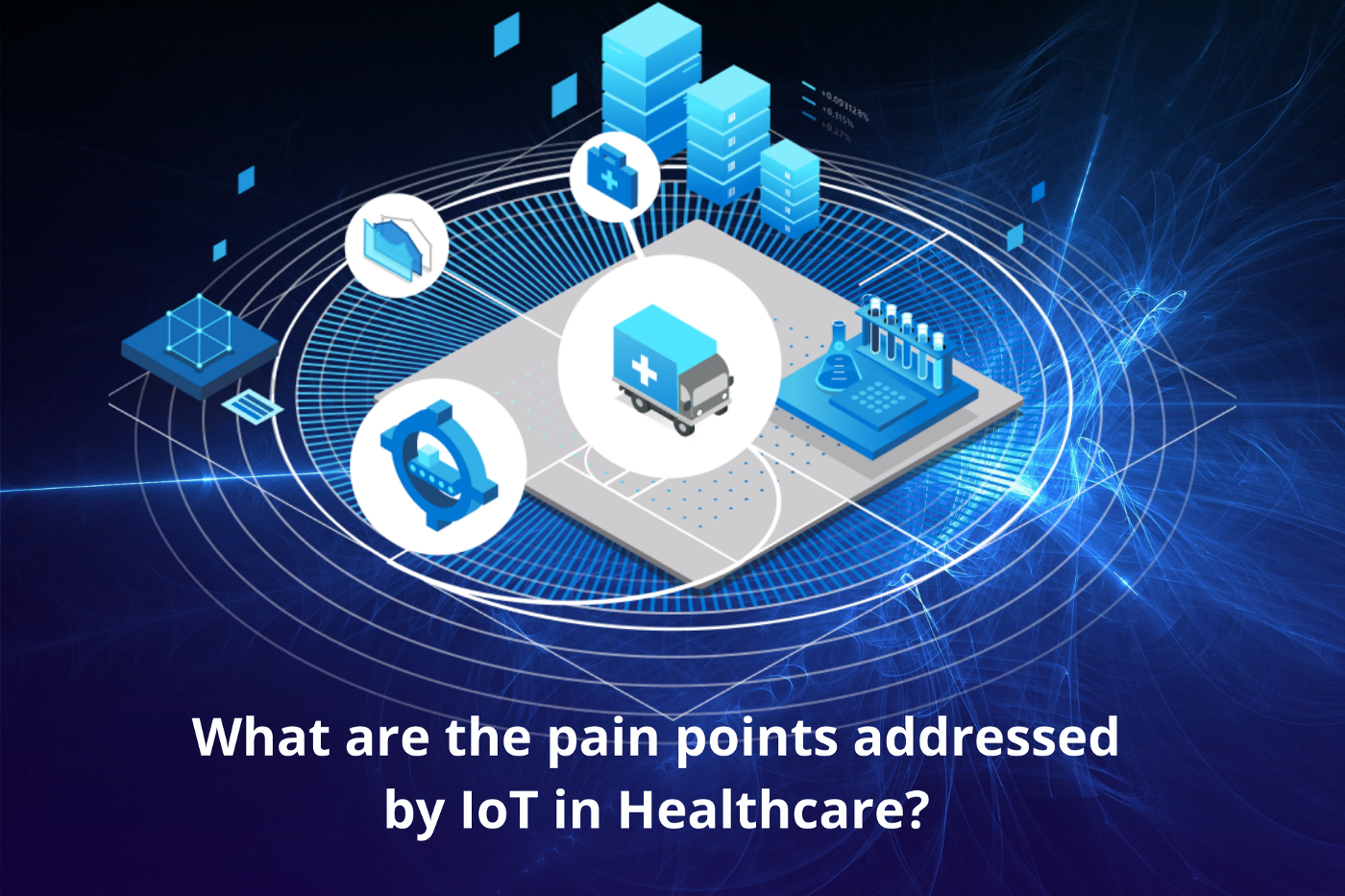
What are the pain points addressed by IoT in Healthcare?
IoT and Healthcare are going hand in hand nowadays. With the help of IoT in the healthcare system, physicians and patients come closer for automated and efficient monitoring of day-to-day work activities. IoT is improving the patients’ and providers’ experience by eliminating the ratio of errors generated in clinical processes.
According to Deloitte, the internet of medical things (IoMT) market worldwide is anticipated to increase to a $158b valuation in the year 2022, rising from $41b in 2017.

The Internet of Things is changing the way the Healthcare industry was functioning before a technology revolution. In this blog, we have mentioned various pain points tackled by the IoT in the most efficient ways.
Lack of efficiency
Gone are the days when patients had to wait in a long queue for just 5–10 minutes of a doctor’s visit. Now no need to worry about the inappropriate data collections in the hospitals as IoT is enhancing patient care in multiple ways.
IoT-connected sensors on hospital wristbands and medical devices gather patient’s data and send it to the cloud storage. Healthcare workers can operate that data from the cloud in real-time. It will mitigate the risks while manual data collection and entry into the system. IoT enables staff to use their time efficiently as well as decrease patients’ waiting time.
Patient’s critical information like heartbeats, blood pressure, and other essential changes in the body can be reported and monitored with IoT-connected devices in real-time. Doctors can easily determine the emergency and take action on the go without risking a patient’s life.
System Faults
No one can deny the fact that errors and faults of the medical system result in multiple deaths. But with the help of IoT, you can eliminate many errors in the healthcare industry.
Doctors’ can leverage IoT-connected wristbands to identify a patient and avoid duplication or mess-up with their data. They can acknowledge a patient’s health condition like a disturbance in heartbeats, any allergies, low-high BP, and other sensitive information. Along with all these, you will get error-free data records.
So IoT is a valuable tool for storing and checking patient’s data.
Rural sectors’ healthcare
IoT is providing personalized health service, video-based conversations, telemedicine, and future well-being tactics without asking patients to leave their villages.
With the help of connected IoT devices’ network, rural people can listen to a doctor who is sitting far away in a Metro hospital, ask them for health advice for any particular tests or X-rays, prescribe medicines, discuss reports, and work towards whether a patient needs to visit a nearby clinic for additional check-ups and medical processes. All can be done face to face through an internet-connected laptop screen.
Various IoT health startups have now come forward to transform the flow of the healthcare industry.
Healthcare Supply Chain
The healthcare industry is changing in the way goods and services are being provided as it is getting much smarter and efficient with new technology developments such as IoT.
Hospitals are using IoT to enable data analytics with their system-wide, cloud-based inventory management. It will help to connect products and procedures with their true value. A system-wide assessment needs a bunch of data, and with IoT, all the data can be collected, compiled, viewed, and acted upon to reach exact direct/indirect costs to make better decisions.
IoT offers connectivity and data sharing abilities through which hospitals can free up their health workers from inventory-related concerns. The hospitals can save largely with IoT by correctly balancing inventory levels that meet usage patterns, decreasing and rightly managing product expiration, mitigating patient risk, and also releasing capital.
Operational Expenses
IoT technology is also playing an important part in enhancing the efficiency of clinical operations. IoT automates most of the clinical workflow that will save overall time and costs.
IoT devices help with faster, easier, and improved data capturing and transferring compared to manual processes. When there is no need for more workforce, it means you can save on your operational expenses. This will also diminish the risk of expensive and time-consuming errors in data entry.
The IoT promises to enhance the quality of healthcare and cut costs. The advantages are important, but hospitals and payers must acknowledge the potential challenges of adopting IoT technology.
Chronic Disease Management
IoT is helping to enhance patients’ health who are having chronic situations. The mixture of remote monitoring, smart devices, and analytics have cut readmission of high-risk patients with congestive heart failure (CHF) by a large part.
Additionally, accessible and affordable devices like heartbeat and blood pressure monitors enhance the overall well-being of chronically ill patients.
Connected wheelchairs allow patients to communicate with health care providers on a greater level, engaging health alerts to health care teams and repair alerts to manufacturers.
IoT guarantees to improve practitioner’s awareness and skills and apply advanced technology to accomplish the goal of efficient and patient-centered care, and overall improved health conditions for chronically ill patients.
Summing Up
Not only the Internet of Things, all the IoT devices and their networks are required to be integrated to aid the healthcare industry in a meaningful way.
IoT is transforming the healthcare industry along with data, speedy communication, high security, and compliance. 5G technology will serve the ultra-low latency speeds and flexibility that is the key requirement in IoT healthcare.
Eventually, IoT and healthcare will be inseparable in the coming years. They will disrupt the ways people are approaching healthcare.
